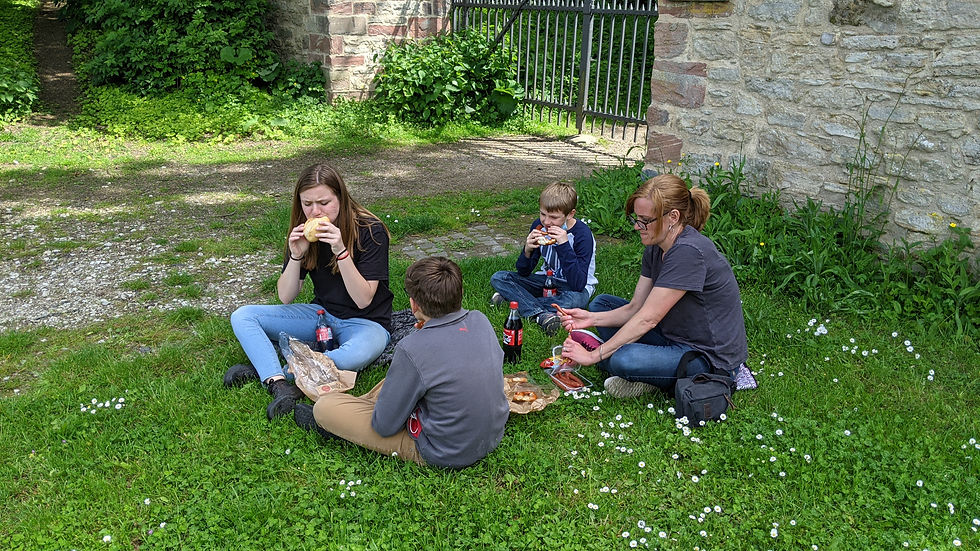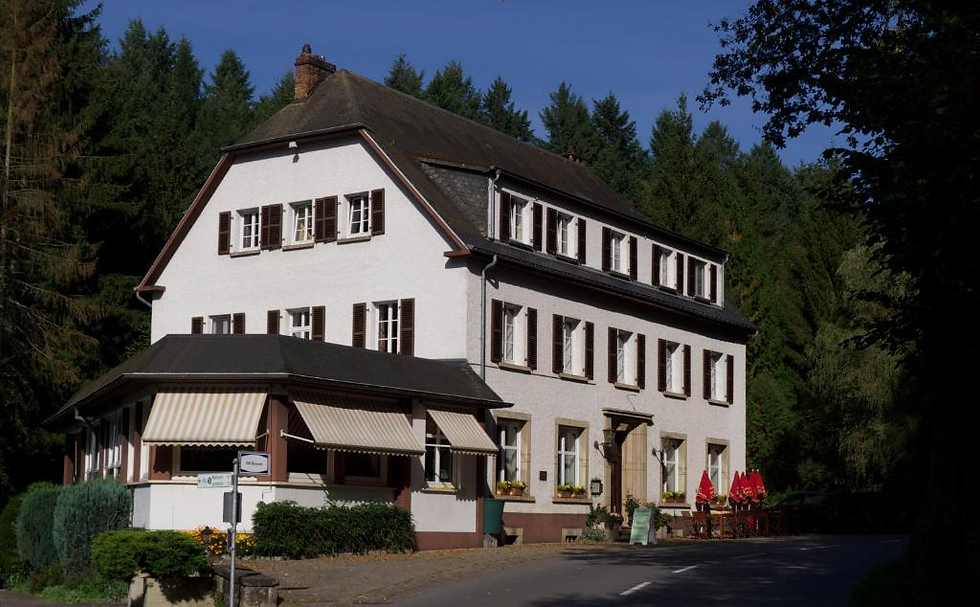You can walk to Mainz (but no one recommends it)
- Jerry Griffis

- Jun 27, 2021
- 3 min read
The one thing I absolutely love about Germany is that you really can walk anywhere. Before our car arrived, we decided to walk from Wiesbaden to Mainz. It's certainly doable, but when I tell people about it they think we are crazy. I think it's all about perspective. The distance is only like 8.3 km if I remember right and the views and path are pretty nice. Really not too bad, although there were a couple of streets I was uncomfortable crossing with kids. We figured it out, though, and everything turned out great.

HISTORY OF MAINZ
In Roman times, Mogontiacum was an important city of the empire. Initially, the Romans established a legionary base or castrum located on a strategic site opposite the mouth of the Main river. From here, the settlement spread and eventually became the military and administrative center of the region. Mogontiacum often served as a military base for campaigns into the east and north of Germany. It soon attracted traders and craftsmen from near and far who set up civil settlements and ports along the Rhine.
For two centuries, Mogontiacum flourished under Roman rule until it succumbed to the ever-increasing pressure of warring German tribes and other groups. The Roman era of Mainz came to an end around 406 CE.


Mainz has always been an important city on the Rhine. Attila the Hun even sacked the city in 451 A.D. If you want to read more about the early history of Mainz, you can go here: https://www.livius.org/articles/place/mogontiacum-mainz/
Anyways, the city of Mainz would continue its history through different hands and empires through the ages, until the present day.

Around 1655, Elector Johann Philipp von Schönborn ordered the walling of the entire city of Mainz with French-style bastions. In the course of this fortress construction, the Schweickhardsburg was expanded into a regular, square "citadel" as we know it today.
The Jacob monastery and the Roman "Drususstein" standing on the Drusus bastion were left untouched within the fortress. A commanders' building (today Building A) was built above the gate facing the city in 1696 under Elector Lothar Franz von Schönborn and the gate system that had existed since 1660 was integrated into the new building. Inside the citadel, there was still the Jacobean monastery until the siege by the French in 1793, but most of it was destroyed by the heavy bombardment. The abbot and foreign building that had remained standing were from then on only used for military purposes. In the southern part of the courtyard, there was probably a baroque garden, which can still be seen on a plan from 1804.

The photos above are from inside the Mainz Cathedral. It is pretty huge and I am kicking myself for not taking a good picture from the outside. It's close, so I am sure we will go again.
Mainz Cathedral Info: https://www.mainz-tourismus.com/en/explore-enjoy/exploring-the-history-of-mainz/churches-other-sacred-buildings/cathedral/
We did make a second trip to Mainz with some friends who are stationed nearby (actually my old boss at Fort Meade). Nathaniel would like me to point out that the pretzels in Mainz are better than the ones in Wiesbaden. Nathaniel and I are always on the lookout for the best pretzels in Germany. More to follow on that.
Below are a few more photos from our second trip to Mainz:
One last note about Mainz (which you can't tell from these photos, my phone locked on our second trip and I was only able to take a handful of photos)...the walk along the Rhine in Mainz is amazing. So many people on picnics and drinking beer...eating ice cream...playing games. We ate at the 'Big Easy', which is the Germans' spin on Cajun. The food was excellent, except for the jackfruit. Apparently, jackfruit is a big deal in some places, but not on our tastebuds...




























Comments